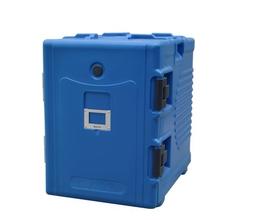Rotomolding is a kind of hollow plastic molding process, also called as rotational molding or rotary forming. Process of
rotomolding is to put the mold plastic powder into mould, then heat the mould and make it rotate continuously along the two perpendicular axes. Under the effect of gravity and heat, the mold resin is evenly coated and gradually melted and adhesive to the surface of mould, thus forming the required shape, and then cool down the mold, products are produced after demolding.
Rotomolding originated from Britain in the 1940s and developed greatly in Europe in 50s, then spread into the United States, Japan and other places, with the mature of polyethylene powder chemical technology, it becomes a highly competitive molding method in powder plastic molding process. In recent years, rotomolding continues developing at the annual growth rate of 10 to 15%, becoming the best processing method for large or extra large enclosed and semi-enclosed hollow seamless containers in the small batch production. At present, the resin consumption of global rotational molding accounts for 8% ~ 9% of its total output.
Compared with traditional methods of hollow plastic molding( such as injection molding, blow molding, thermoforming, etc.), the most remarkable characteristic of rotomolding is that resin heating, shaping and cooling process go on in the absence of pressure within the mold. Such characteristics show a series of advantages.
Mould is simple, cost is low, suitable for forming large plastic products;
Suitable for various small batch production of plastic products;
Suitable for forming products and composite products of complex shape;
Save raw materials;
Products have uniform wall thickness and no seams;
Products have residual force, not easy to deform;
Color change is easy, when need to change the color of products, just clean forming mould.
